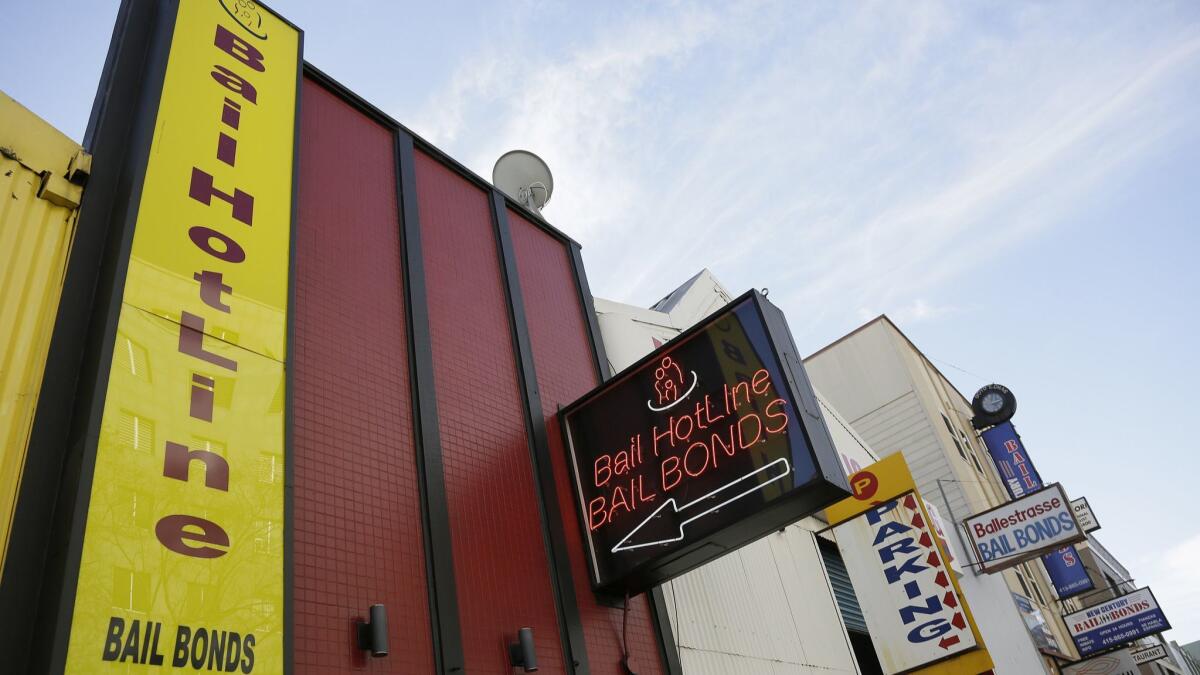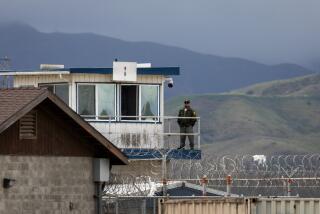Editorial: California has a ragged road to bail reform

Senate Bill 10 is California’s road to bail reform — a rough, ragged road of unknown length, lined with hazards and requiring tunnels that are not yet dug and bridges not yet built. Traveling this road with the Legislature, as it votes to move the bill forward, requires a leap of faith that those charged with completing the project — prosecutors, defense lawyers, county probation departments and, above all, Superior Court judges — will do their work with skill, integrity and dispatch. It’s not the bail reform bill that many reform advocates wanted or that the Los Angeles Times editorial page had hoped for. But if it becomes law, it will eliminate the unjust, un-American system of allowing a person’s wealth to determine whether he or she will be locked up before trial or walk free. It is therefore an important step forward.
At its core, bail reform is not just about bail — the refundable cash or property that a defendant traditionally deposited with the court as a guarantee that he or she would show up for trial, or the unrefundable percentage that modern-day defendants pay to bail agents for putting up the full amount. It’s about justice between arrest and trial, and the time-honored American premise that even a person accused of a serious crime is to be treated as innocent until proven guilty. The presumption of innocence should translate into a presumption that people who are arrested and arraigned should then be set free to return to their homes, families and jobs and be in the best position to prepare their defense.
The presumption of innocence should translate into a presumption that people who are arrested and arraigned should then be set free to return to their homes.
Obviously this presumption may be overridden by the circumstances. A defendant accused of threatening a witness, for example, or of committing an act of violence, or one who has a history of fleeing — such a person may have to be kept under supervision or even in jail if necessary for public safety. Once money is eliminated from the equation, the task should be to determine exactly when, and how, to override the presumption of pretrial release.
SB 10 is the result of long negotiations over how to make those decisions. It divides the population of arrested people into categories and allows those accused of the lowest level crimes to be released unconditionally before trial. That’s as it should be.
At the other end are those accused of violent crimes. For them, there will be a presumption of pretrial detention, and it is up to them and their attorneys to make their case to a judge that they can be released without risk. That switch in the burden of proof is cause for concern. Shouldn’t it be the prosecutor who must make the case for jail instead of the defendant making the case against it?
Even more problematic is a vast middle group, whose pretrial fate will be determined in part by probation departments, county boards of supervisors, risk-assessment algorithms and other tools and players. Each county will be given much — perhaps too much — discretion to make its own decisions about how to define the offender categories for the purposes of pretrial release. In addition, probation officers will have an outsize role in pretrial services, even though some jurisdictions outside California have had more promising results from agencies unaffiliated with law enforcement.
Enter the Fray: First takes on the news of the minute from L.A. Times Opinion »
Because the bill does not sufficiently adhere to a rebuttable presumption of release and too often favors detention, it could leave more people, with or without money, sitting in jail before trial, in danger of losing work — and in the process losing paychecks and therefore even homes and families. That makes them more likely to plead guilty just to get out, even if they could win their cases at trial.
Perhaps most troublesome is that prosecutors would be able to seek pretrial detention based on a poorly defined “substantial reason to believe” that it’s necessary to protect the public or guarantee the defendant’s appearance in court. That provision requires serious tightening if the bill is truly to be considered reform because it undermines the presumption against detention even if the crime charged is relatively minor.
But let’s return to the basic point: Despite all of its compromises, disappointments and flaws, and with all of the work yet to be done, the bill would still achieve a remarkable goal. If it becomes law, it would make probability of danger or flight rather than wealth the determining factor in pretrial release decisions. In so doing, it would correct an egregious failing of the criminal justice system in California.
Follow the Opinion section on Twitter @latimesopinion and Facebook.
More to Read
A cure for the common opinion
Get thought-provoking perspectives with our weekly newsletter.
You may occasionally receive promotional content from the Los Angeles Times.










